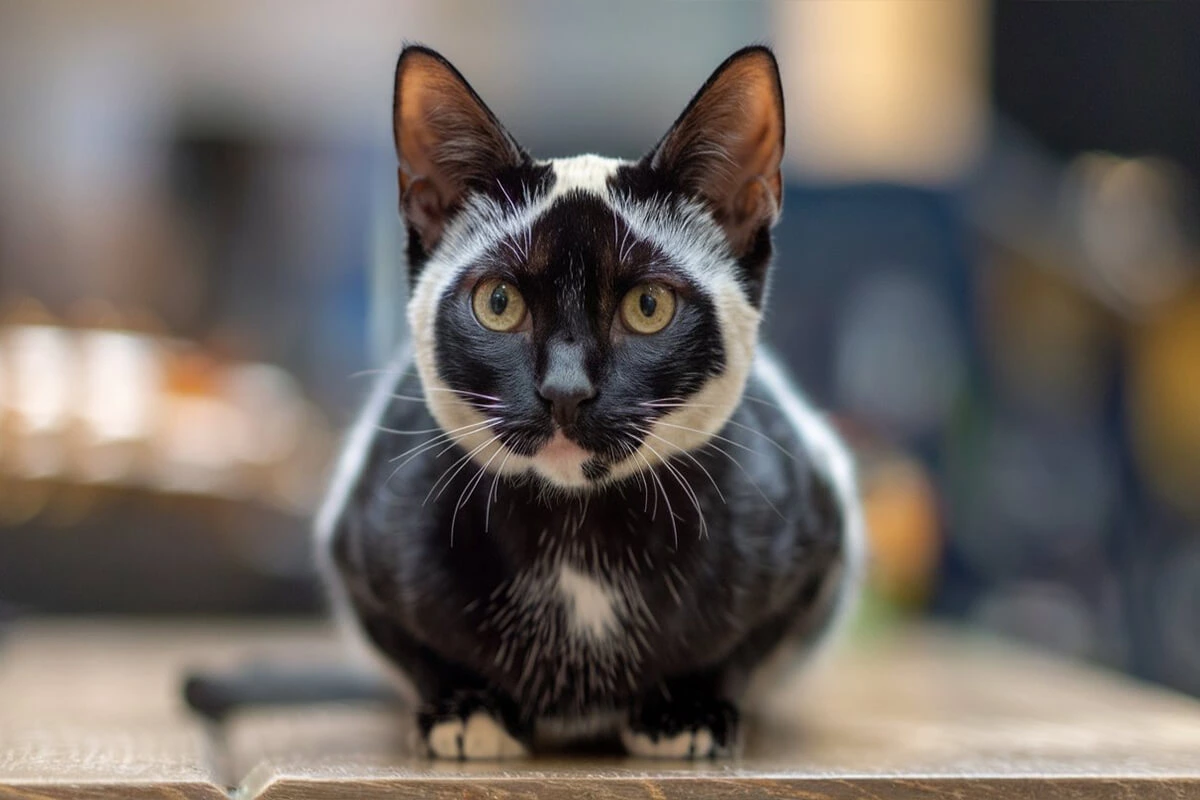Salty Licorice Cats are captivating companions known for their unique traits and endearing personalities. These special cats require a blend of attention, care, and understanding to thrive. Whether you’re a seasoned cat owner or welcoming your first feline friend, caring for Salty Licorice Cats can be a rewarding experience.
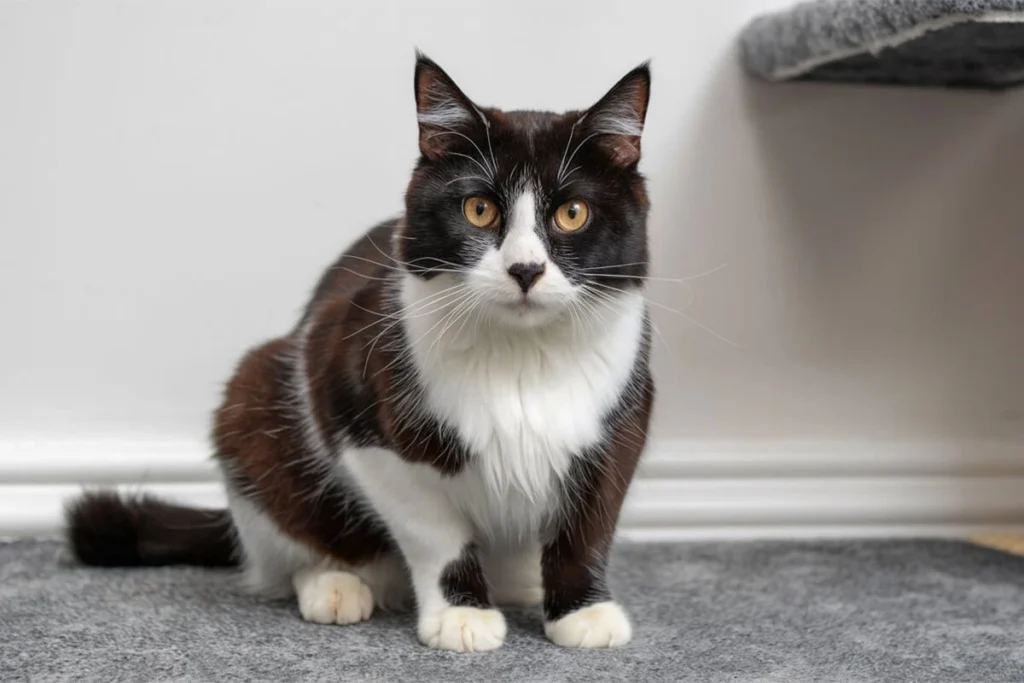
These cats aren’t just about their striking appearance or quirky behavior—they offer deep connections to those who understand their needs. From their diet to grooming, every aspect of their care plays a role in their happiness and well-being. Their playful nature and charming habits make them delightful, but they also need the right environment to flourish.
In this guide, we’ll explore everything you need to know about keeping Salty Licorice Cats healthy and content. You’ll discover tips on feeding, grooming, understanding their behavior, and creating a safe, enriching home. Let’s uncover the secrets to providing the best care for these amazing feline companions.
Understanding Salty Licorice Cats
What Makes Salty Licorice Cats Unique?
Salty Licorice Cats stand out for their distinctive traits and endearing quirks, making them truly one-of-a-kind feline companions. Their personalities often strike a balance between playful mischief and quiet affection, which endears them to cat lovers of all kinds.
Physically, they may exhibit unique coat patterns, eye colors, or body features that set them apart from other breeds or mixed breeds. Their agility and curiosity make them skilled explorers around the home, often turning mundane objects into their favorite toys.
Behaviorally, Salty Licorice Cats are often known for their strong personalities. They may have an independent streak but also crave social interaction and mental stimulation. These cats thrive on engaging environments and often display a keen intelligence, making them fast learners when it comes to training or adapting to new routines.
Additionally, their unique appearance or demeanor often captures attention. Whether it’s their striking gaze, sleek movements, or a quirky habit like perching on high shelves, Salty Licorice Cats leave an unforgettable impression on anyone who meets them.
Why the Name “Salty Licorice Cats”?
The name “Salty Licorice Cats” is as intriguing as the cats themselves. It draws inspiration from the distinct blend of sweetness and saltiness found in the popular salty licorice candy. Much like the candy, these cats offer a unique combination of traits that can be surprising yet deeply enjoyable.
The “salty” aspect symbolizes their spunky, sometimes sassy nature. These cats might show a bold personality, standing their ground in situations that other cats might shy away from. They might be vocal, expressive, or display playful stubbornness, adding character to their interactions with owners.
On the other hand, “licorice” reflects their softer, sweeter side. Despite their boldness, Salty Licorice Cats are incredibly loving and often form strong bonds with their human companions. They show affection in ways that are unique to them, whether it’s curling up next to you after a day of exploring or greeting you with their distinct meows when you come home.
The name also evokes a sense of rarity and uniqueness, much like the taste of salty licorice itself. Not every cat can be called a Salty Licorice Cat—it’s a term that embodies their extraordinary mix of individuality, charm, and personality.
Feeding and Nutrition Tips for Salty Licorice Cats
Choosing the Right Diet
Feeding Salty Licorice Cats the right diet is essential for their health, energy, and overall well-being. These cats thrive on a balanced diet rich in high-quality protein, as cats are obligate carnivores. Look for premium cat food brands that list real meat, such as chicken, turkey, or fish, as the primary ingredient. Wet food is often preferable because it provides hydration alongside essential nutrients, but dry kibble can be included as part of a mixed diet for dental health.
It’s important to adjust their food to meet their individual needs. For example, kittens require more calories and nutrients to support their growth, while adult cats need a diet that maintains their weight and muscle mass. Senior cats may benefit from food designed for aging felines, with added vitamins to support joint health and digestion.
You might also consider grain-free or limited-ingredient diets if your Salty Licorice Cat has allergies or sensitivities. Consulting a veterinarian can help you determine the best options based on your cat’s age, activity level, and any medical conditions. Regularly monitoring their weight and adjusting portions will ensure they stay healthy and fit.
Foods to Avoid
Certain foods are harmful or even toxic to Salty Licorice Cats and should never be part of their diet. Common culprits include:
- Chocolate: Contains theobromine, which is toxic to cats and can cause vomiting, seizures, or even death.
- Onions and Garlic: These foods can harm a cat’s blood cells, which can make them very weak.
- Grapes and Raisins: Even a little bit of these can make a cat’s kidneys stop working properly.
- Dairy Products: While some cats can tolerate dairy, many are lactose-intolerant, which can lead to digestive upset.
- Raw Meat and Fish: While cats are carnivores, raw meat and fish can carry harmful bacteria or parasites.
- Artificial Sweeteners (like Xylitol): Found in sugar-free foods, xylitol is extremely toxic to cats and can cause hypoglycemia or liver failure.
Additionally, avoid feeding them human food scraps or treats that contain high levels of salt, sugar, or fat. Always double-check ingredient labels and consult your vet if you’re unsure about a particular food.
Healthy Treats for Salty Licorice Cats
Treats can be a great way to reward your Salty Licorice Cat, reinforce positive behavior, or simply bond with them. However, it’s important to choose healthy options that complement their diet.
- Freeze-Dried Meat Treats: Made from single ingredients like chicken, salmon, or beef, these treats provide pure protein without additives.
- Cat Grass or Catnip Snacks: Cat grass aids digestion and satisfies their natural craving for greens, while catnip treats provide a fun and stimulating experience.
- Dental Treats: Specially designed treats can help clean their teeth and freshen their breath while being tasty and nutritious.
- Cooked, Unseasoned Meat: Small portions of plain, cooked chicken, turkey, or fish can be a delightful and healthy treat.
When offering treats, moderation is key. Treats should make up no more than 10% of their daily calorie intake to prevent weight gain. Always ensure treats are free of harmful additives or artificial ingredients, and avoid overfeeding, as this can lead to health problems.
By selecting high-quality foods and treats, you can keep your Salty Licorice Cat healthy, energetic, and happy.
Grooming and Hygiene for Salty Licorice Cats
Coat Care and Maintenance
Salty Licorice Cats often have unique and beautiful coats that require regular care to keep them looking their best. Brushing is essential, regardless of whether they have short or long fur. For short-haired cats, brushing once or twice a week helps remove loose fur and keeps their coat sleek. Long-haired Salty Licorice Cats may need daily brushing to prevent tangles and mats.
Use the right tools for their coat type. A soft-bristle brush or grooming mitt works well for short coats, while a slicker brush or wide-tooth comb is better for long-haired cats. Regular brushing not only keeps their coat in top condition but also minimizes shedding and reduces the risk of hairballs.
In addition to brushing, it’s important to inspect their coat regularly for signs of dryness, dandruff, or parasites like fleas and ticks. A healthy coat should be shiny and free from flakes or bald patches. If you notice any issues, consult your veterinarian to rule out underlying health concerns or allergies.
Bathing Tips
Bathing is not usually necessary for Salty Licorice Cats, as they are excellent self-groomers. However, occasional baths might be needed if they get into something messy or have skin conditions that require special treatment.
To bathe your cat, follow these tips:
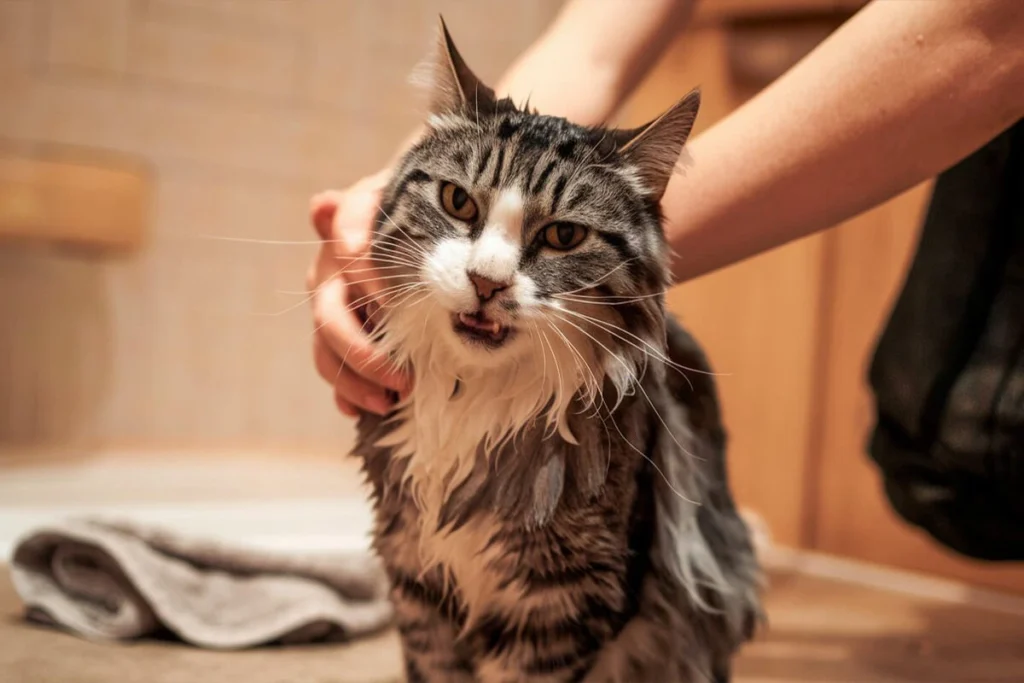
- Use Cat-Specific Shampoo: Avoid human shampoos or harsh chemicals. Choose a gentle, cat-safe formula that matches their coat needs, such as hypoallergenic or moisturizing shampoos.
- Prepare the Bath Area: Use a sink or shallow tub with warm (not hot) water. Put a mat that doesn’t slip in the bathtub to help them stay safe.
- Be Gentle: Wet their coat slowly, avoiding their face, ears, and eyes. Apply shampoo, lather gently, and rinse thoroughly. Residual shampoo can irritate their skin.
- Dry Them Properly: Pat their fur with a towel to remove excess water. For long-haired cats, you may need to use a hairdryer on the lowest setting, keeping it at a safe distance.
Keep bath time stress-free by speaking softly and handling them with care. If your Salty Licorice Cat strongly dislikes baths, consider using waterless shampoos or wipes as an alternative.
Nail and Dental Care
Proper nail and dental care are essential for the overall health of your Salty Licorice Cat. Neglecting these areas can lead to discomfort, infections, or other health problems.
Nail Care
Trim your cat’s nails every 2–4 weeks, depending on how quickly they grow. Regular trims prevent overgrown nails, which can curl into their paw pads and cause pain or infections. Use a pair of cat-specific nail clippers for the best results.
To trim their nails:
- Choose a Calm Moment: Wait until your cat is relaxed, such as after playtime or a meal.
- Inspect Their Paws: Gently press on the paw pad to extend the claws.
- Avoid the Quick: The quick is the pink part of the nail containing blood vessels. Trim only the sharp, clear tip to avoid bleeding.
If your cat resists, trim just one or two nails at a time and take breaks to avoid stressing them.
Dental Care
Dental health is crucial for Salty Licorice Cats to prevent issues like plaque, tartar buildup, or gum disease. Regular brushing is the best way to maintain their oral hygiene. Use a cat-specific toothbrush and toothpaste (never human toothpaste, as it’s toxic to cats).
To brush their teeth:
- Start Slowly: Let your cat sniff and taste the toothpaste to get used to it.
- Gently Brush: Lift their lips and brush in small, circular motions, focusing on the outer surfaces of their teeth.
- Be Patient: If they resist, try brushing just one or two teeth per session and gradually increase.
In addition to brushing, consider offering dental treats or toys designed to reduce plaque. Regular veterinary checkups are also vital to monitor their oral health and address any issues early.
By staying consistent with coat, nail, and dental care, you’ll keep your Salty Licorice Cat looking and feeling their best!
Behavioral Traits and Training Tips
Understanding Their Behavior
Salty Licorice Cats are known for their unique blend of personality traits, which can make them both charming and occasionally challenging companions. Understanding their behavior is key to building a strong bond and ensuring a harmonious relationship.
These cats are often curious and highly intelligent, making them natural explorers and problem solvers. They may investigate new environments, open cabinets, or figure out how to access their favorite toys. Their inquisitive nature keeps life exciting but also requires owners to provide mental stimulation through enrichment activities and interactive play.
While Salty Licorice Cats are independent thinkers, they are also affectionate and enjoy spending time with their human companions. They may greet you at the door, follow you around the house, or curl up beside you during quiet moments. However, they value their personal space and may prefer affection on their terms.
Communication is another key aspect of their behavior. Salty Licorice Cats often express themselves through a variety of vocalizations, body language, and facial expressions. Pay attention to their cues—such as tail flicks, purring, or meowing—to better understand their mood and needs.
Training Techniques
Training Salty Licorice Cats is both rewarding and practical, as it helps strengthen your bond and prevent unwanted behaviors. Due to their intelligence, these cats are quick learners, especially when training sessions are fun and engaging.
- Give Rewards for Good Behavior: When someone does something good, give them treats, say nice things, or spend fun time with them.they use the scratching post or follow a command.
- Keep Sessions Short and Fun: Cats have short attention spans, so aim for sessions lasting 5–10 minutes. Finish with a good message to inspire them and keep their spirits high.
- Teach Basic Commands: Start with simple commands like “sit,” “come,” or “stay.” Use a clicker or verbal cue to mark the behavior, followed by a reward.
- Redirect Unwanted Behaviors: Instead of punishing your cat, redirect their attention to appropriate activities. For instance, if they’re scratching furniture, guide them to a scratching post and reward them for using it.
Training can also include practical skills, such as leash training for outdoor adventures or teaching them to tolerate grooming routines. Consistency and patience are essential, as cats may need time to fully grasp new commands.
Addressing Common Behavioral Challenges
Salty Licorice Cats, like all cats, may display certain behaviors that can be challenging for their owners. Understanding the root cause and addressing it with empathy can help resolve these issues effectively.
Scratching Furniture
Scratching is a natural behavior for cats, as it helps them stretch, mark territory, and maintain their claws. If your Salty Licorice Cat scratches furniture, provide plenty of scratching posts or boards. Place these near their favorite scratching spots and use catnip to encourage use. Cover furniture with protective covers or double-sided tape as a deterrent.
Biting or Aggression
Biting can occur during play or as a response to feeling threatened. If your cat bites, avoid rough play that encourages this behavior. Use toys instead of hands to engage them. For aggression, identify triggers, such as loud noises or unfamiliar visitors, and create a safe space where your cat can retreat and feel secure.
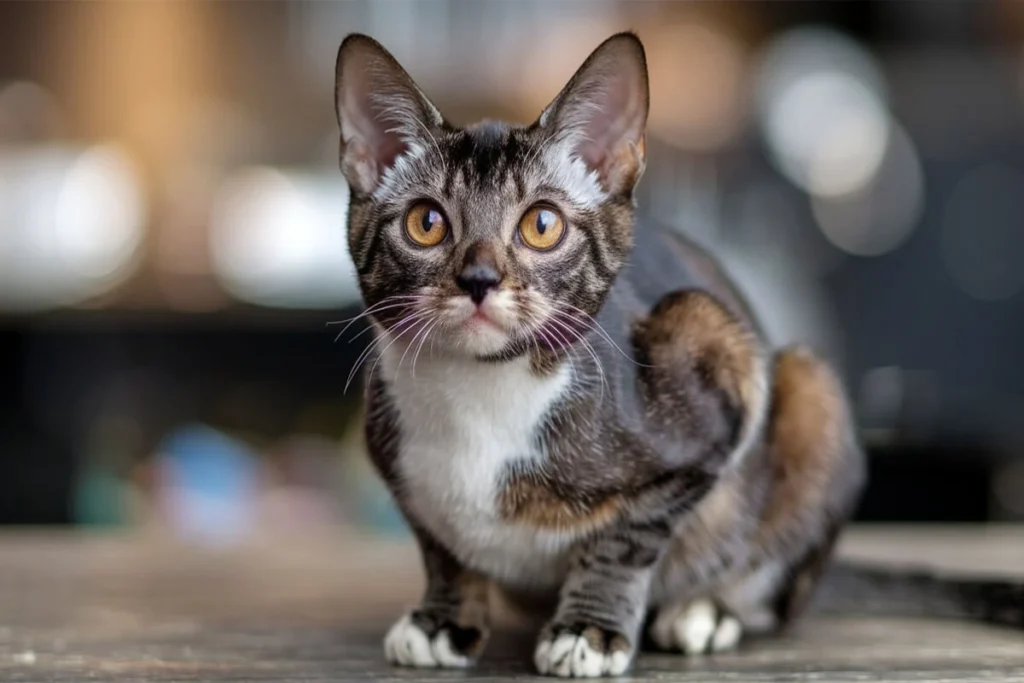
Excessive Meowing
Some Salty Licorice Cats are vocal by nature, but excessive meowing may indicate boredom, hunger, or a need for attention. Ensure they have a consistent feeding schedule, plenty of toys, and regular interaction. If the meowing persists, consult a veterinarian to rule out underlying health issues.
Litter Box Issues
If your cat stops using the litter box, check for possible causes, such as a dirty box, an unsuitable location, or medical problems. Clean the box daily, provide one box per cat plus an extra, and choose a quiet, easily accessible spot. If the problem continues, consult a vet.
By understanding their behavior, using effective training techniques, and addressing challenges with patience, you can foster a happy and well-behaved Salty Licorice Cat.
Keeping Salty Licorice Cats Happy and Healthy
Regular Veterinary Checkups
Routine veterinary checkups are vital for keeping your Salty Licorice Cat in excellent health. These visits provide an opportunity to monitor their overall well-being, catch potential issues early, and ensure they stay up-to-date on vaccinations.
Why Regular Checkups Matter
Cats are masters at hiding pain or discomfort, which makes routine vet visits even more important. A thorough examination can detect subtle signs of illness, such as weight loss, dental issues, or changes in behavior, before they escalate into serious problems.
Key Areas to Monitor
- Vaccinations: Protect your Salty Licorice Cat against common feline diseases like feline leukemia virus (FeLV), feline distemper, and rabies.
- Dental Health: Regular dental checks can prevent periodontal disease, which affects a significant number of adult cats.
- Parasite Control: Your vet can recommend treatments to protect against fleas, ticks, and worms.
- Blood Work and Tests: Especially as your cat ages, blood tests can help screen for conditions like kidney disease or diabetes.
How Often to Visit the Vet
Kittens require more frequent visits for vaccinations and development monitoring, while healthy adult cats should visit at least once a year. Senior cats or those with chronic conditions may need checkups every six months.
Enrichment and Playtime
Keeping your Salty Licorice Cat mentally and physically stimulated is essential for their happiness and health. These intelligent and curious cats thrive in environments that challenge their minds and satisfy their natural instincts.
Benefits of Enrichment
Enrichment prevents boredom, reduces stress, and encourages natural behaviors like hunting, climbing, and exploring. Without sufficient stimulation, your cat may develop destructive behaviors or become lethargic.
Ideas for Enrichment Activities
- Interactive Toys: Puzzle feeders, treat-dispensing balls, or toys with unpredictable movements keep your cat engaged.
- Play Sessions: Dedicate 15–20 minutes a day to active play using wand toys, laser pointers, or small, lightweight balls.
- Climbing Opportunities: Cats love vertical spaces, so provide cat trees, shelves, or perches for climbing and observing.
- Hiding Spots and Tunnels: Cats enjoy exploring cozy, enclosed spaces. Cardboard boxes, cat tunnels, or fabric tents are excellent options.
- Rotate Toys: Keep playtime exciting by rotating toys to maintain novelty and engagement.
Incorporating Catnip or Silvervine
Introducing catnip or silvervine toys can add extra excitement to playtime. Not all cats respond to these plants, but for those that do, the experience is both stimulating and calming.
Creating a Cat-Safe Environment
A safe and comfortable environment is critical for the well-being of your Salty Licorice Cat. Cats are naturally curious and may encounter household hazards if their space isn’t properly prepared.
Essential Safety Measures
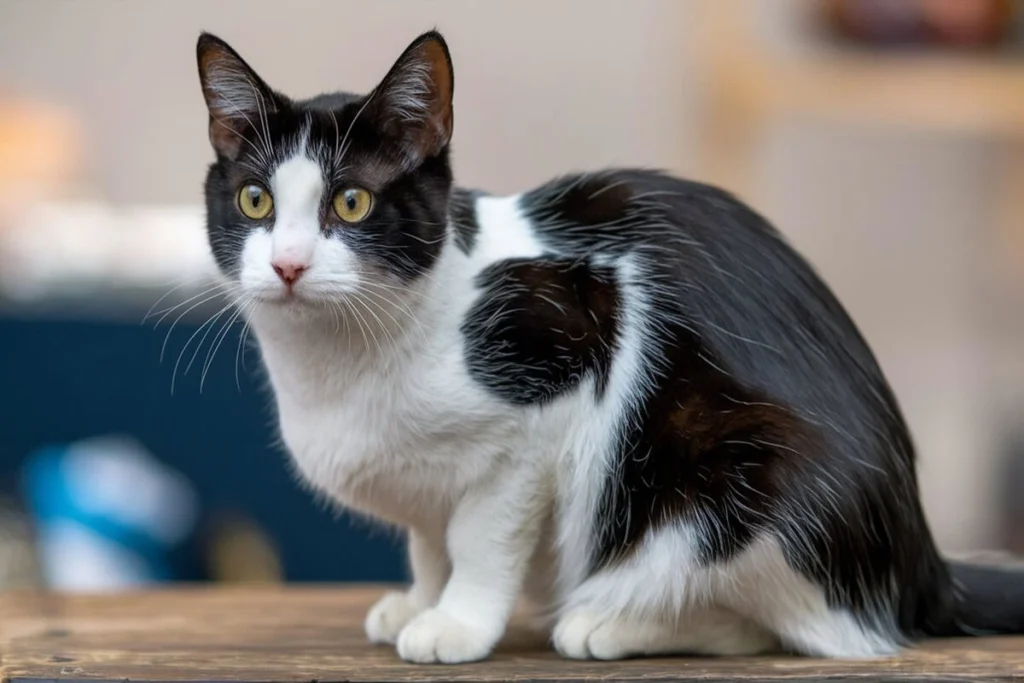
- Secure Hazardous Items: Store cleaning products, medications, and toxic plants like lilies out of reach. Even small amounts of these substances can be harmful.
- Cover Electrical Cords: Protect cords by securing them with cord covers or hiding them behind furniture to prevent chewing.
- Ensure Windows and Doors Are Secure: Install screens or use window locks to prevent accidental falls. Cats may be tempted to chase birds or other outdoor distractions.
- Remove Choking Hazards: Small items like rubber bands, strings, or buttons can pose a choking risk. Keep these items out of reach.
- Create a Quiet Retreat: Provide a designated space where your cat can relax and feel secure, especially during stressful events like visitors or loud noises.
Adding Comfort and Enrichment
- Soft Bedding: Offer a cozy bed or blanket in a quiet spot where your cat can nap.
- Litter Box Placement: Put the litter boxes in calm and easy-to-reach places.. A general rule is to have one box per cat plus one extra.
- Fresh Water and Food Stations: Ensure your cat has access to clean water and nutritious food in a calm, low-traffic area.
- Temperature Control: Keep their environment at a comfortable temperature and provide warm spots during colder months.
Outdoor Safety (If Applicable)
If you allow your Salty Licorice Cat to explore outdoors, consider supervised outings on a leash or providing a secure, enclosed outdoor catio. These options let your cat enjoy fresh air and natural stimuli while staying safe from predators and traffic.
By combining regular veterinary care, engaging enrichment activities, and a safe environment, you’ll create the perfect foundation for your Salty Licorice Cat’s happiness and health.
You can Discover more about Breeds on PawPits Official website
Conclusion
Caring for Salty Licorice Cats is a rewarding journey filled with joy, companionship, and unique experiences. These exceptional feline companions bring a blend of spunky personality, affectionate charm, and playful curiosity to any household. Understanding their distinct needs—whether it’s their diet, grooming, behavioral tendencies, or enrichment preferences—ensures they thrive in a loving and nurturing environment.
By prioritizing their health through regular veterinary checkups, providing mental and physical stimulation with engaging activities, and creating a safe, comfortable space, you’ll foster a strong bond with your cat. Remember, every Salty Licorice Cat has its own unique quirks and traits. Embrace their individuality, celebrate their antics, and be patient as they adapt to their surroundings and routines.
Building a relationship with your Salty Licorice Cat goes beyond meeting their basic needs. It’s about learning their language, respecting their boundaries, and cherishing the moments of connection, whether it’s a quiet cuddle, a playful chase, or their adorable quirks that make you smile. These cats may be small in size, but they leave a big impact on the hearts of those who care for them.
As you embark on the adventure of caring for a Salty Licorice Cat, know that the time and effort you invest will be returned many times over through their companionship and affection. With love, understanding, and dedication, you’ll create a life where your feline friend can truly flourish.
To Discover more of pets you can check This!
